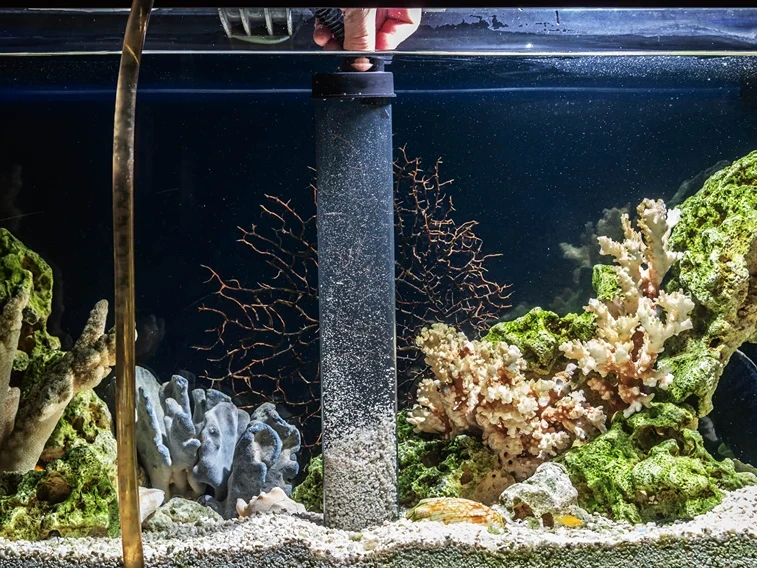Breeding cichlids can be an incredibly rewarding experience, blending the beauty of these vibrant fish with the excitement of nurturing new life. Whether you’re a seasoned aquarist or just starting, understanding the nuances of cichlid breeding is key to success. Let’s dive into the world of cichlid breeding, where every detail counts and every moment is a step towards a thriving aquatic family.
Basic Requirements for Cichlid Breeding
Ideal Tank Conditions:
- Water Quality: Crystal clear and well-filtered water is a must.
- Temperature: A stable temperature, specific to your cichlid species, is crucial.
- pH Levels: Maintain a pH level suitable for your cichlid species.
Diet and Nutrition:
- Balanced Diet: A mix of high-quality pellets, live, and frozen foods.
- Frequent Feeding: Especially important during the breeding phase.
Register for our latest in-depth reviews and product round-ups from the experts
Enter your email address below to receive our twice monthly reviews emails.
By entering your details, you are agreeing to our terms and conditions and privacy policy. You can unsubscribe at any time.
Sexing Cichlids: Identifying Males and Females
Physical Differences:
- Coloration: Males often have more vivid colors.
- Size: Males are usually larger and more robust.
Behavioral Signs:
- Territoriality: Males tend to be more territorial.
- Courting Behavior: Males often perform elaborate displays to attract females.
Breeding Behaviors in Cichlids
Courtship Rituals:
- Dance Displays: Males often perform a dance to woo females.
- Nest Building: Some species build nests to attract mates.
Territoriality and Aggression:
- Space Dominance: Males often claim and defend territories.
- Aggressive Displays: Flaring gills and chasing are common.
Cichlid Breeding Methods: Mouthbrooding vs. Substrate Spawning
Mouthbrooding:
- Egg Protection: Females, or sometimes males, carry eggs in their mouths.
- Fry Care: Parents release fry for short periods before taking them back.
Substrate Spawning:
- Egg Laying: Eggs are laid on a flat surface.
- Parental Care: Both parents often guard and care for the eggs.
Setting Up a Breeding Tank for Cichlids
Tank Size and Setup:
- Spacious Tank: Ample space for the pair to interact and breed.
- Hiding Spots: Rocks and caves for shelter and egg-laying.
Creating a Conducive Environment:
- Water Flow: Gentle water movement to mimic natural habitats.
- Lighting: Adequate lighting, but not too intense to stress the fish.
Managing Tank Mates and Isolation:
- Selective Pairing: Choose compatible pairs for breeding.
- Isolation: Consider a separate breeding tank for privacy and safety.
Breeding cichlids is not just about the technicalities; it’s about creating a slice of nature in your home. It’s about observing and learning from these magnificent creatures. As we explore further, remember, patience and attention to detail are your best tools in this journey. Stay tuned for more insights into the advanced techniques of cichlid breeding and answers to frequently asked questions in the next part of this exploration.
Advanced Techniques and FAQs in Cichlid Breeding
Continuing our journey into the fascinating world of cichlid breeding, let’s delve into some advanced techniques that can elevate your breeding success. Plus, we’ll answer some of the most burning questions that cichlid enthusiasts often ask. Remember, breeding these colorful creatures is as much an art as it is a science!
Advanced Breeding Techniques for Cichlids
Hybrid and Selective Breeding:
- Goal: Enhance specific traits like coloration or size.
- Approach: Careful selection of parent fish based on desired traits.
Genetic Considerations:
- Importance: Avoid inbreeding to maintain genetic diversity.
- Strategy: Rotate breeding pairs and introduce new genetic lines.
Enhancing Coloration and Health:
- Diet: Foods rich in carotenoids can enhance color vibrancy.
- Environment: Stress-free conditions lead to healthier, more vibrant fish.
Common Challenges in Breeding Cichlids
Dealing with Aggression:
- Strategy: Provide ample hiding spaces and manage tank territories.
- Observation: Regularly monitor for signs of excessive aggression.
Egg and Fry Care:
- Protection: Safeguard eggs and fry from other tank inhabitants.
- Feeding: Offer appropriate-sized food for fry.
Preventing Common Diseases:
- Cleanliness: Regular tank maintenance to prevent disease.
- Quarantine: New fish should be quarantined before introduction.
Breeding cichlids is a journey filled with learning, patience, and a bit of trial and error. But the rewards of seeing a tank full of vibrant, healthy cichlids are immeasurable. Keep experimenting, observing, and most importantly, enjoying every step of this fascinating process!
Frequently Asked Questions
Look for signs of courtship and territorial behavior.
- Generally not recommended due to potential health and behavioral issues.
- Typically, it ranges from 3 to 7 days, depending on the species.
- Start with infusoria or specially formulated fry food, then gradually introduce brine shrimp.
Monte Levin
Monte's journey in fish care started at a young age, fostering a connection with underwater ecosystems that goes beyond the surface. As our resident expert, he's dedicated to sharing his expertise and ensuring that every fish owner, from beginners to seasoned hobbyists, has the tools and knowledge needed to create a thriving aquatic environment.




